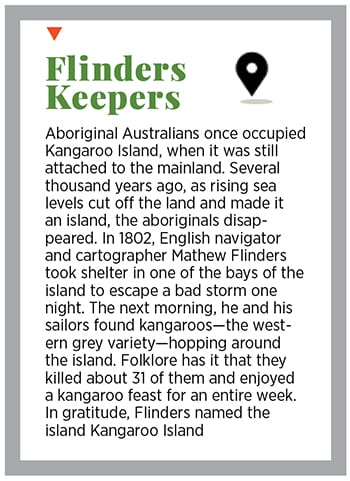Life on the animal planet
Along the southern coast of Australia lies Kangaroo Island, where conservation efforts have led to flourishing wildlife
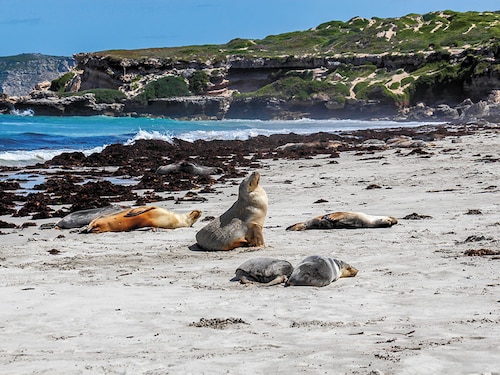

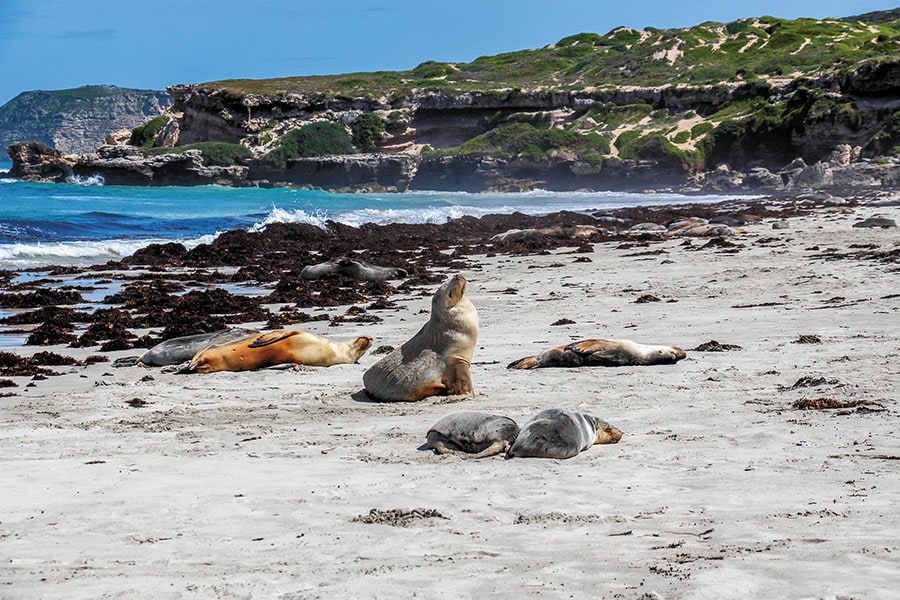 Most of the times, the Australian sea lions are found resting on the beach
Most of the times, the Australian sea lions are found resting on the beach
Image: Rathina Sankari
That is seal yoga!” exclaimed Mark Kelly, my guide on Kangaroo Island, southwest of the city of churches, Adelaide, in Australia. I chuckled at his statement, but the seals sure did look like they were up to something with their heads bent backwards and snouts pointed towards the sky. I had arrived an hour earlier, after a 40-minute flight from Adelaide, to Australia’s third largest island, which is part of the South Australian state. With a population of less than 5,000 on the 4,350 sq km island—which, technically, means 1 person per sq km—it has four policemen, two dentists, six doctors and three schools. Most of the population is concentrated in Kingscote and Penneshaw, leaving the vast majority of the land to wilderness and wildlife: The island has 21 conservation parks and one large national park, Flinders Chase. The ratio of human population to wildlife, and human habitats to wilderness, makes it far more likely that—outside of the urban hubs—you will come across the island’s animal inhabitants rather than human ones. Quite often, you could be the only person walking its pristine beaches.
About 83 percent of Australian sea lions live in South Australia and the rest in West Australia. In the 18th and 19th centuries, their numbers dwindled due to large-scale hunting for their pelts and blubber oil, resulting in their extinction in Bass Strait, a channel that separates Tasmania from the South of the mainland.
Today, however, there are about 12,000 sea lions in South Australia, of which 900 are found in Seal Bay. The team at Seal Bay Conservation Park is actively involved in monitoring their population, pup mortality and mum-and-pup interactions. This, they do with the help of embedded microchips that help track them. About 200-odd pups are born in Seal Bay during the breeding cycle, with last season’s count being 231.
Today, these sea lions face threats posed by gillnets, which are used to fish gummy sharks, saw sharks and elephant fish. To address this issue, the Australian Fisheries Management Authority has been encouraging fishermen to adapt hook-and-line fishing methods. They have also introduced limits of the number of sea lions bycatch within the gillnet closure, which is 28 km south of Seal Bay. Cameras ensure round-the-clock monitoring, and once the limit is reached, the area is closed to gillnet fishing for the next 18 months.
These non-migratory mammals lead a dual life—one on the beach, and the other in the depths of the ocean. Sea lions are bottom-feeders that can remain at sea for a period of three days, hunting for food with little rest. Their torpedo-like body enables them to take 900 to 1,300 dives during this time, which is why—joked Kelly—the yoga helps clear their sinuses.
*****
By now, just watching the sea lions go through their stretching moves was making my stomach grumble an early start to the day had meant a light breakfast. With Kelly promising an elaborate lunch, we headed to an 800-acre property that was originally a sheep farm, of which 280 acres is a protected bushland.
Kangaroo Island houses 700,000 sheep, predominantly the merino variety that is reared for wool and meat. As we headed towards lunch, we passed fields where grains like wheat, barley, oats and canola are cultivated. While farming is now the primary occupation, in the late 19th and early 20th centuries, the island had 48 distilleries of eucalyptus oil. The oil was extracted from the narrow-leaf mallee variety of eucalyptus (a native of Kangaroo Island) and the gum trees that dominate the island. The distillery industry dwindled as farming gained momentum. Today, the island has only one distillery producing oil that is widely used as an antiseptic. 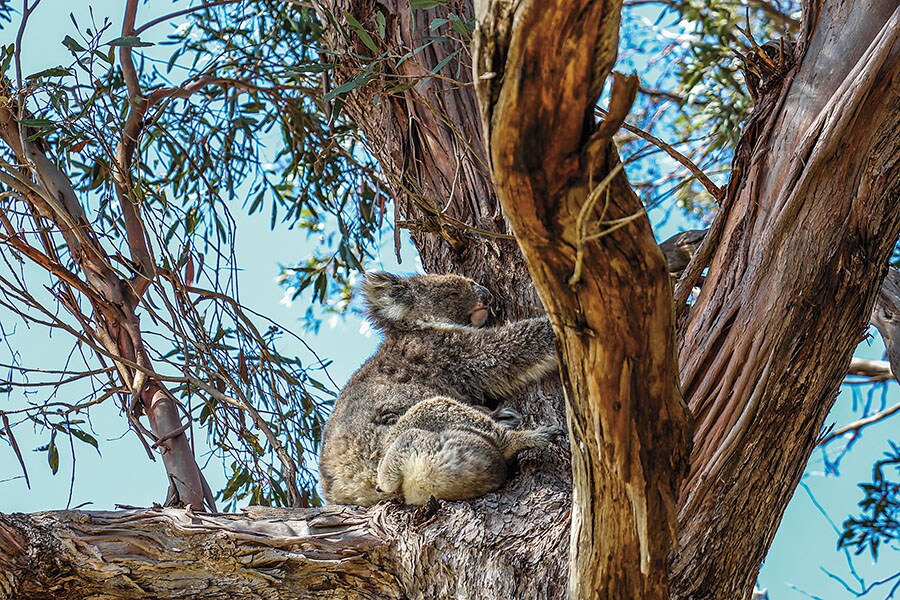 A koala with her joey
A koala with her joey
Image: Rathina SankariWe reached the private farm, and Kelly fired up the barbeque and set the table at the campsite. Before that, he pointed towards the huge yacca plants on the farm, which grow just about 1 cm a year, which means 1 m in 100 years. “A bushfire doesn’t kill the yacca,” said Kelly. “The fire-resistant hardy plants gave rise to the yacca gumming industry in the late 19th century. In 1930, men would kill the plant to collect resin and make explosives, as it could control the burning time of the explosives.” Today, the yacca is a protected species and its felling is banned. However, its resin is used to make dyes and as a wood varnish. Winemakers use the resin to colour the wine by harvesting the dead yacca. The gum from the yacca dissolves in alcohol and produces an infusion that is garnet red. The island’s climate is ideal for cultivating grapes. It is home to about 29 vineyards, 14 labels and five cellar doors.
Lunch, as promised, was sumptuous. There was well-done lamb rump, chicken barbeque with aioli dressing, a fulfilling leek and lentil soup, a creamy and crunchy pasta salad and a refreshing Sauvignon Blanc from the island’s False Cape vineyards.
After having stuffed ourselves like the koala—they eat 1 kg of eucalyptus leaves a day—we went in search of the solitary creatures. The common myth surrounding these marsupials is that they get high on eucalyptus leaves, which is why they sleep between 18 and 22 hours a day. In reality, however, the eucalyptus leaves are low on nutrition, and high on fibres and toxins (which only the koala can digest). The koalas, therefore, need to conserve as much of their energy as possible to digest the leaves. 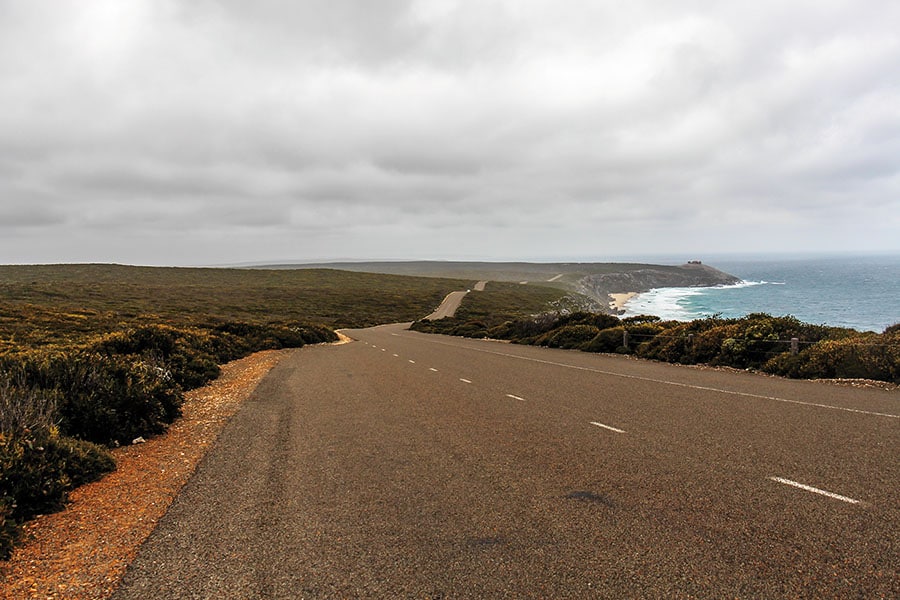 With zero traffic jam, the island is a haven for wildlife
With zero traffic jam, the island is a haven for wildlife
Image: Rathina SankariWalking among the gum and mallee trees, I spotted one sitting on a high branch. It did not move a muscle, and I began to wonder if the greyish-brown fur ball was even alive. A little ahead, another one sat with its head drooping, and its limbs dangling as if in a drunken stupor. Kelly pointed to another tree where a mother koala and her joey enjoyed their afternoon siesta.
“Do you know the Aussie expression ‘Beware of the dropped bears’?” asked Kelly, adding that it does not actually refer to bears, but to koalas. Sometimes, the koalas fall off the branches and land on the ground they promptly scamper up again, as if nothing has happened. “In 1920, to revive the diminishing koala population, 18 koalas from the mainland were released on Kangaroo Island,” Kelly continued. “The koala census undertaken in 2001 showed there were 27,000 of them on the island. Today, through sterilisation, their numbers are being controlled.”
Having admired the tree huggers, we hit the road towards Lathami Conservation Park on the northern coast of the island to watch other marsupials in action. Suddenly, a kangaroo hopped across the road, and Kelly brought the car to a screeching halt. “The only traffic on Kangaroo Island are kangaroos darting across the road,” he exclaimed. Government authorities take extra care to ensure the animals don’t become road kills. Rented cars of visitors to the island aren’t insured to drive at night, thus minimising the chances of them hitting the animals. “The locals are attentive while driving in the late evenings,” Kelly added. 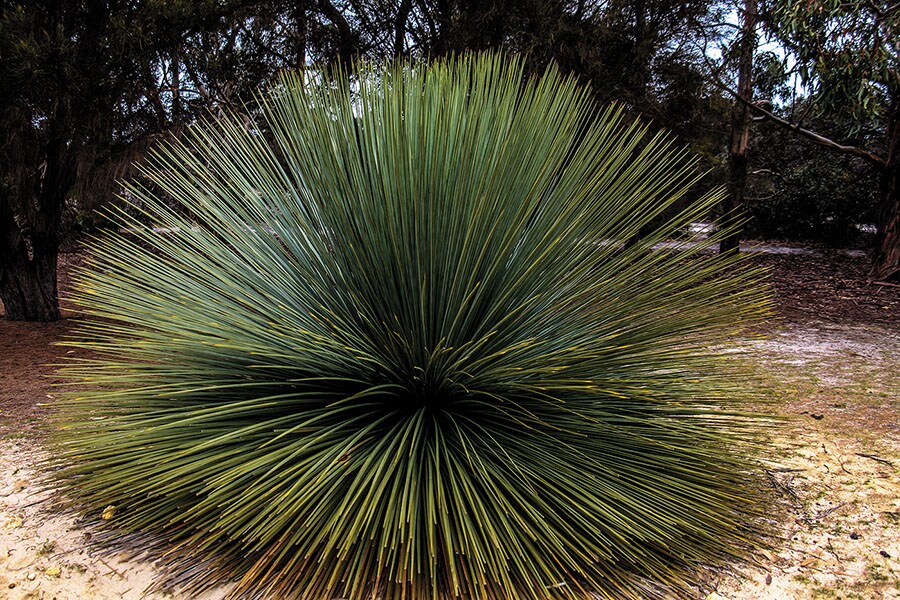 The yacca plant is found across Kangaroo Island
The yacca plant is found across Kangaroo Island
Image: Rathina SankariAt the Park, we set off on foot and soon sighted a wallaby peering through the dry vegetation. Seconds later, it jumped past us into the undergrowth. Very soon, it was followed by a kangaroo, with a joey in her pouch. Soon, we stumbled upon a pair lying under a tree and licking their bodies to cool themselves. Sometimes, these macropods destroy farmlands and become difficult to manage. Farmers must then secure a government permit to cull a fixed number of kangaroos and wallabies to control their population and strike a balance between conservation and human activity.
The island is a haven for those who love to live life off the grid. “Not everyone enjoys their life here,” Kelly said. “It is secluded and remote, and there is not much human interaction as you live in the wilderness. Many who come to the island for a living, leave in few months’ time as they are not used to this kind of life.” Kelly moved from the mainland a few decades ago, and there has been no looking back for him. “I enjoy the wilderness and the isolation of this peaceful island. How long are you here?”
As I looked at the crimson sky in the west, I had no answer.
The writer travelled to Kangaroo Island at the invitation of South Australia Tourism Commission
First Published: Dec 29, 2018, 08:38
Subscribe Now